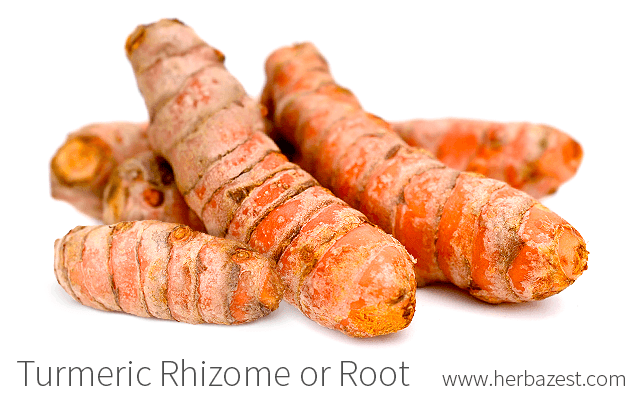Because in common speech they are used interchangeably, one of the most confounding aspects of discussing turmeric plant anatomy is understanding the difference between rhizome and roots. While the roots play an important role in deriving essential nutrients, the turmeric rhizome is the most commercially and medicinally important part of this plant.
A Rhizome Is Not a Root
The root system of a plant develops underground and is comprised of its roots, tubers, and rhizomes. Though they are closely related, one of the key differences between rhizomes and roots is that rhizomes have tiny breathing pores, which allow the plant to exchange carbon dioxide and oxygen, while roots do not.
In the case of turmeric, roots emerge from the primary rhizome and grow forth into the nether regions of the soil, absorbing water and vital nutrients along the way. This is an important function for growth because it fuels other parts of the plant.
In addition, turmeric roots help to further anchor the plant. In some varieties, they may even culminate in tiny bulbous tubers. They contain some of the same tissues as rhizomes and stems, but with key variations in arrangement and appearance.
Turmeric Rhizome
Sometimes referred to as "root" or "rootstock," the turmeric rhizome is actually a horizontally-growing stem that develops underground.
“RHIZOME” IS A GREEK WORD WHICH MEANS “MASS OF ROOTS.”
Not unlike the ginger root, the turmeric rhizome is grown from an already-developed plant part, projecting aerial shoots and downward-facing roots from its fingers and nodes. In proper growing conditions, this mother rhizome will grow to about 0.75 - 1.2 inches (2 - 3 cm) across in diameter.
For turmeric production, the rhizome is the most commercially-significant part for the culinary and pharmaceutical industries. It is consumed in raw form, dried and ground for spices, or used for the extraction of its oleoresin.1
The most potent medicinal compounds are also housed in the turmeric rhizome and serve as the basis for a number of different clinical investigations on turmeric's benefits for human health. These important phytonutrients (called curcuminoids, of which the most potent is curcumin) are active pigments responsible for the deep orange color of the turmeric rhizome.
The turmeric rhizome is commonly washed and peeled prior to household use. Furthermore, the use of plastic gloves or an apron can help protect skin, clothing, and other surfaces from stubborn stains caused by direct contact with turmeric.
Although important nourishing components of any turmeric plant, the roots are very rarely discussed outside of the botanical arena. In reality, the turmeric rhizome is the star of the show and is the genesis for virtually all culinary and medicinal preparations of the herb. These two parts come together to form the underground root system of the turmeric plant.
Sources
- Estrella Mountain Community College, Arizona, Plants and Their Structure
- Furman University, South Carolina, Plant roots
- Plant Rhizome Project, What is a rhizome?
- The Agronomy and Economy of Turmeric and Ginger, pp. 15-18
- Washington State University, Research Organisms, Turmeric (Curcuma longa L.)
Footnotes:
- Medicina (Kaunas). (2020). Properties, Extraction Methods, and Delivery Systems for Curcumin as a Natural Source of Beneficial Health Effects. Retrieved October 19, 2021, from https://www.ncbi.nlm.nih.gov/pmc/articles/PMC7404808/




